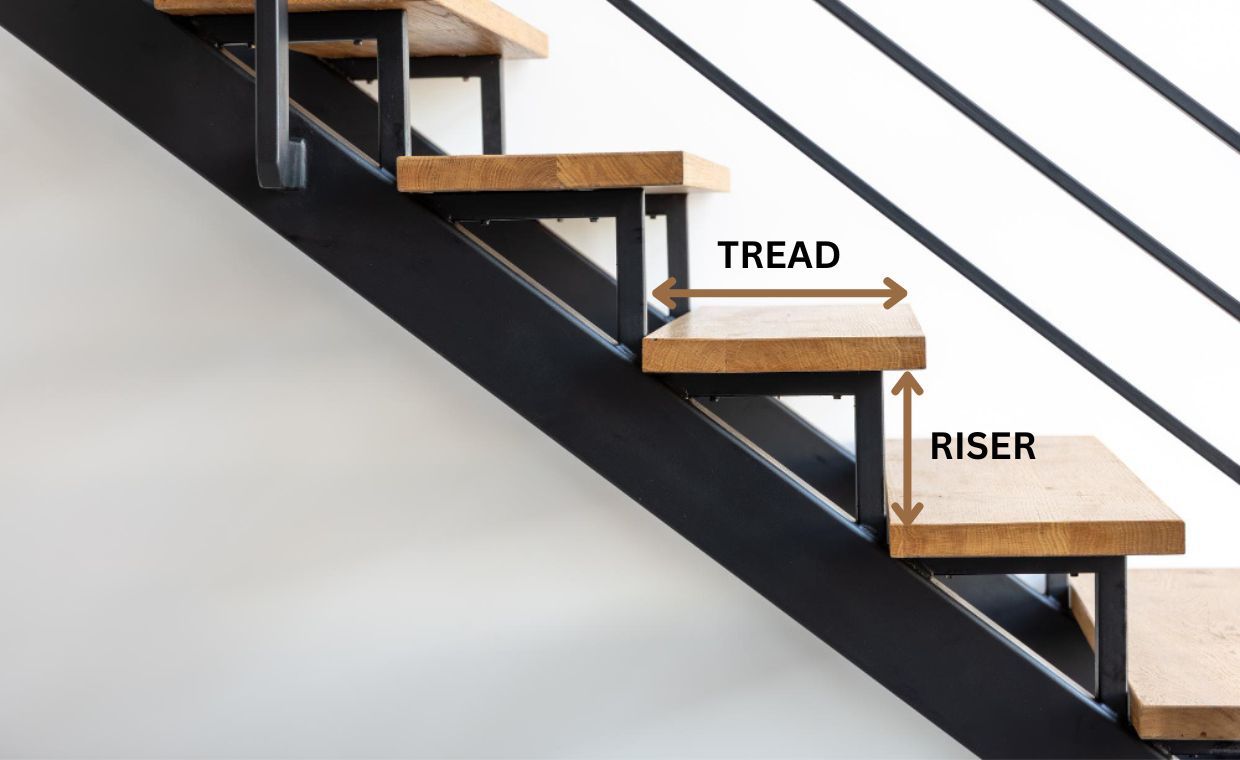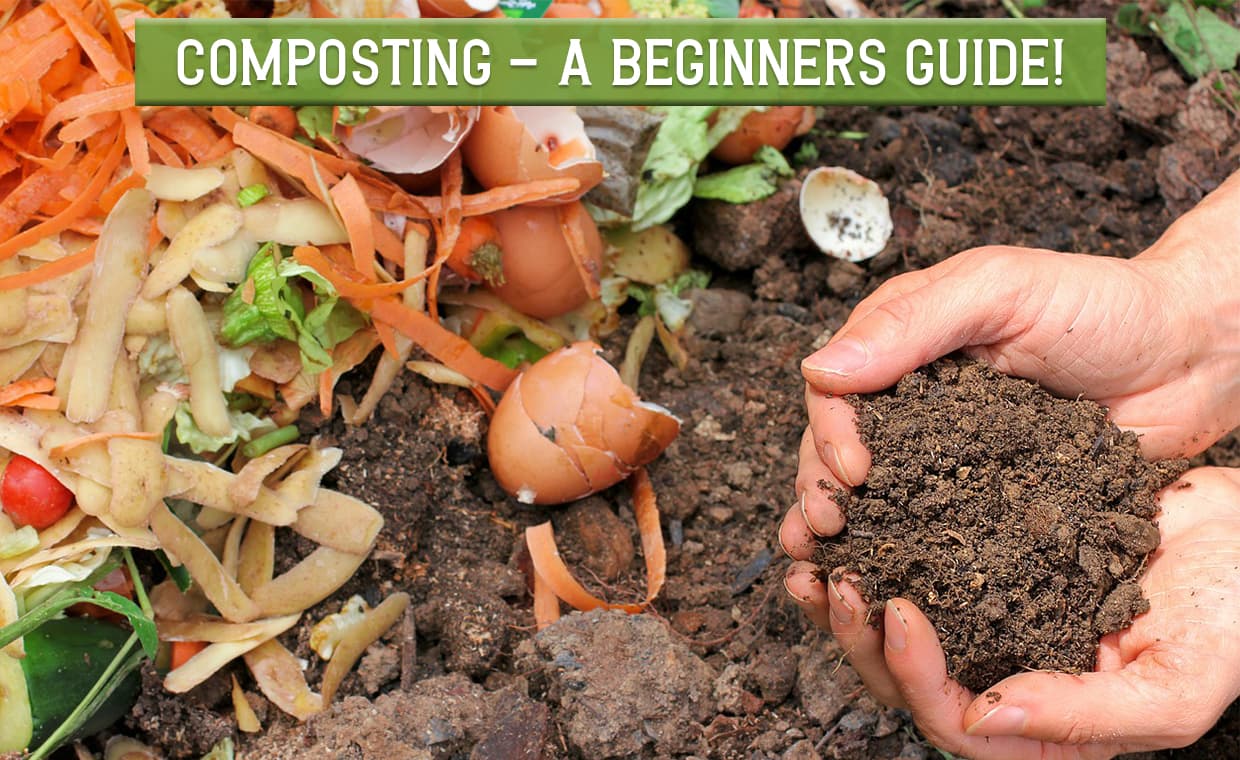
Composting has become quite popular over the years and for the right reasons. Compost, in very simple words, is decayed organic matter decomposed naturally under oxygen-rich conditions. So, instead of tossing kitchen scraps or dead flowers in the trash, you throw it all together in a pile and let nature slowly break it down and turn into a nutrient rich substance called compost.
As per the dictionary meaning composting is a mixture of various decaying organic substances, as dead leaves or manure, used for fertilizing soil. It is best suited to people with a bit more space in backyard and households that produce garden waste such as lawn clippings and leaves.Lets’ start with some composting guide for beginners:
What to Compost?
While any kind of organic waste does decompose naturally, only some items are considered compostable and can be added to the compost pile.
Items that can be composted directly include:
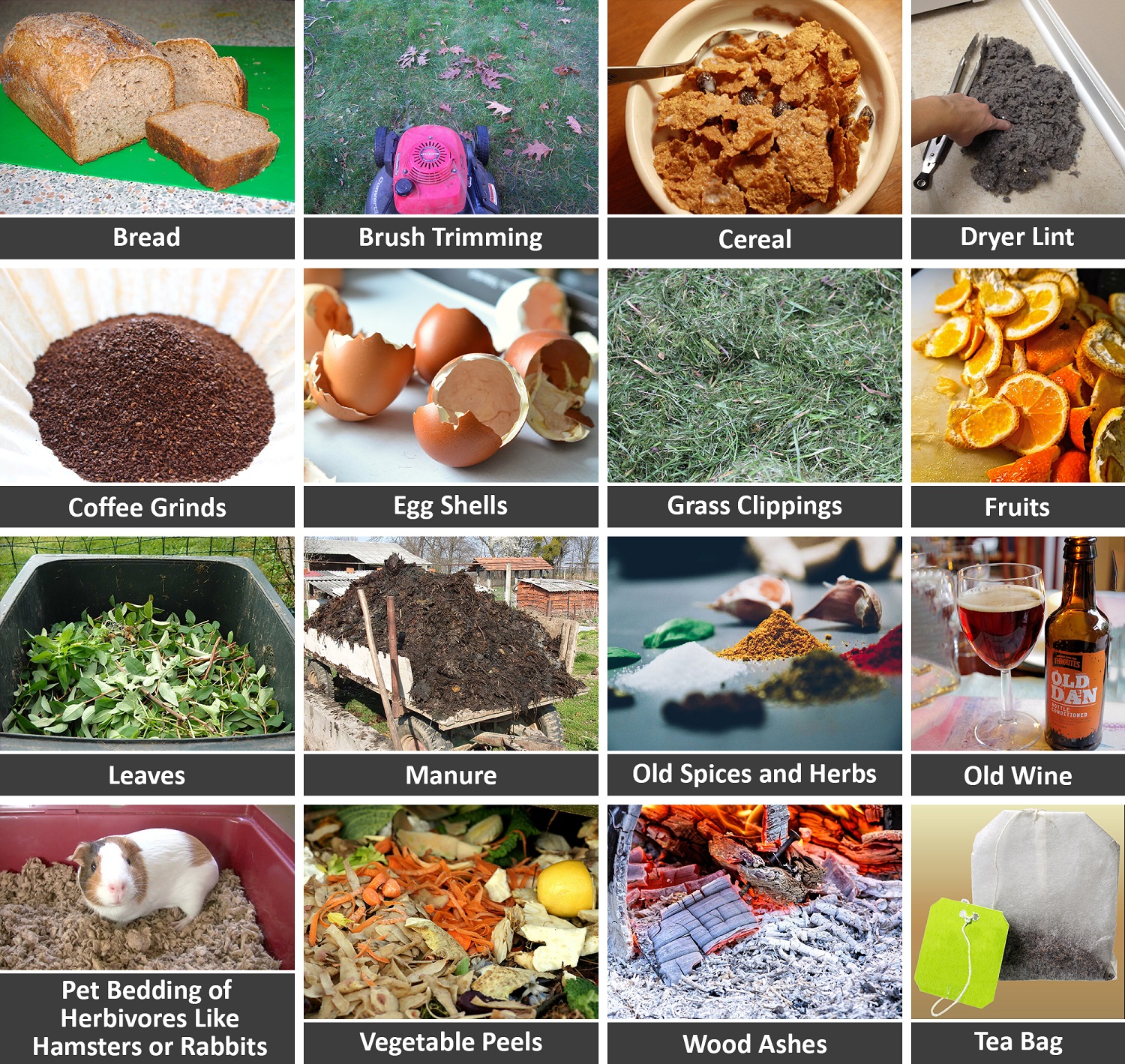
Items That Need Prep
All the items listed below can be added to the compost but, take a lot of time to break down. If you dump these items in your normal composting pile, you may still be able to find them a season or two later in their original form. These items will start breaking down eventually after a year or two.
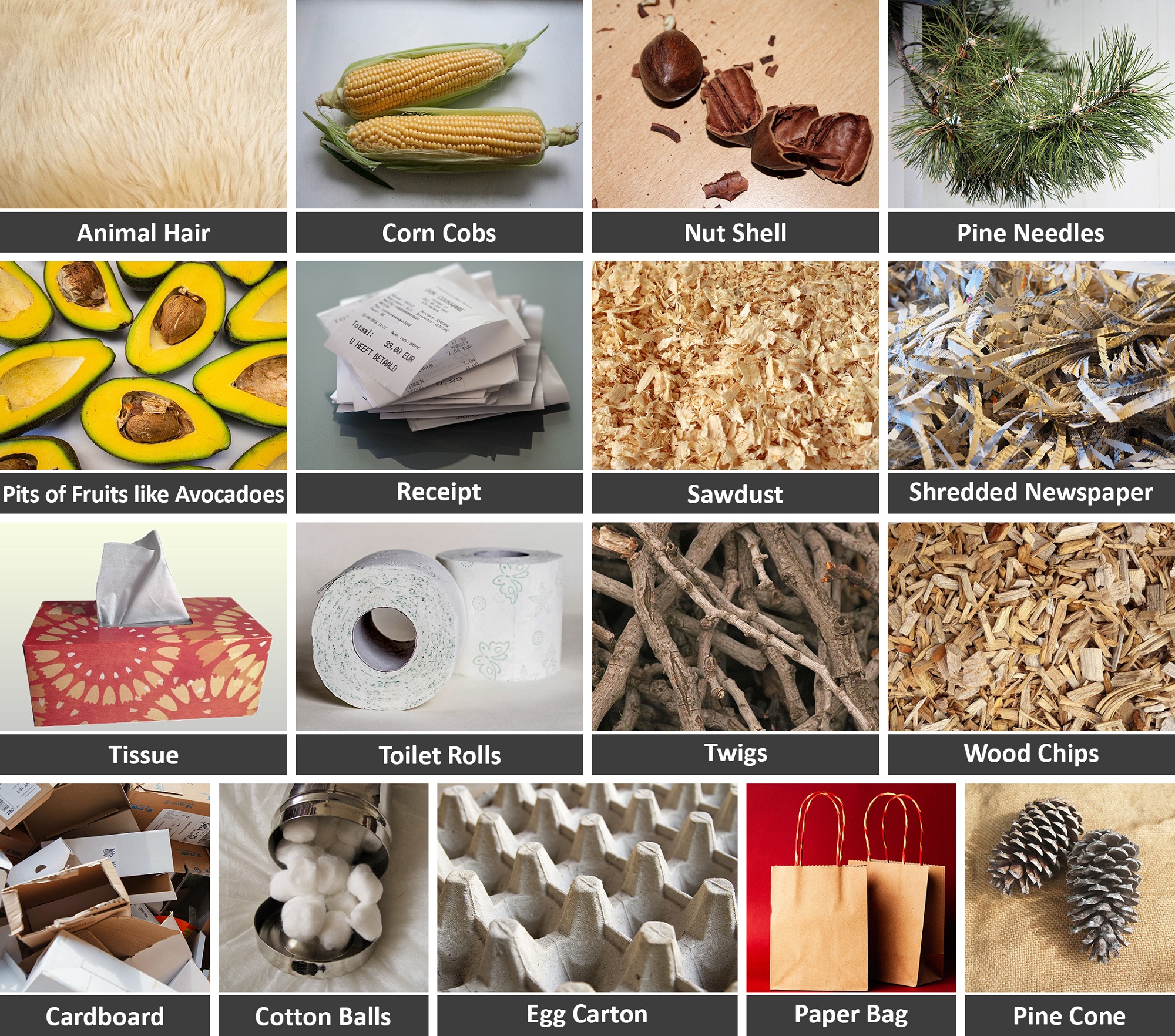
Meat products on the other hand should be avoided as it can stink up the entire place and in turn attract large animals. Fats, lards, grease and oils should not be added to the composting pile as it can attract pests. Also, pet droppings especially of dogs and cats should be avoided.
Contrary to popular belief, composting isn’t as difficult. Whether you have a large yard or live a small home, everyone can compost easily as long as you have basic understanding of the entire process.
Let’s learn how it works, the tools you may need and its pros and cons.
Composting Tools
There are different ways to compost and the style that you choose will dictate the tools you require for the process. Some prefer a simple pile while others like to use a compost bin or a compost barrel tumbler. People who lack yard space can consider keeping a small compost bin inside.
A dual-chamber bin, an aerator and other similar accessories can help quicken the process. If you are planning to add vegetable and fruit trimmings to your compost pile, you will require a rodent-resistant bin. People who have a huge yard and wish to utilize the space can create a shallow pit and let nature do its thing.
By considering the space available for composting, choose the tools you will need from the list below.
01. Scoop Shovel and Spade:

You will need the scoop shovel when trying to access the materials at the very bottom of the pile. Heavier and lightweight options are available depending on the quantity of compost you plan on moving. There are various styles of shovels with slight variations that help enhance specific gardening tasks.
- Rounded-blade shovel– A rounded-blade shovel serves as an excellent all-purpose tool for various gardening activities like turning the compost, shovelling finished compost from a bin, mixing compost into the garden beds and more.
- Pointed-blade shovel– A pointed-blade shovel comes in handy when chopping up organic matter to incorporate into the compost pile.
A spade, on the other hand, has a straight, sharp head used particularly for digging. The pointed edge helps break down thick, large materials like vines and stalks. The spade can also be used to turn the compost pile.
02. Compost Aerator:
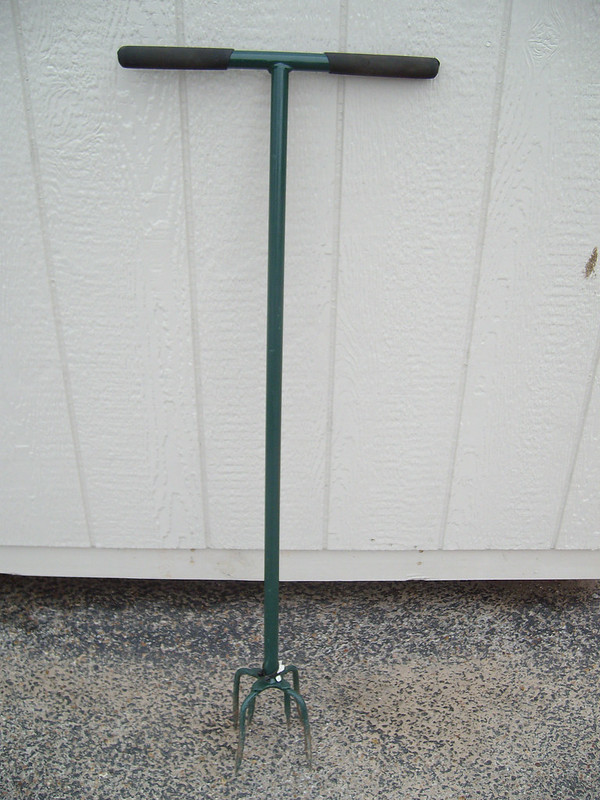
A compost aerator is a tool used to stir the compost pile from time to time. An aerator typically is a rod with “wings” at the base. When the aerator is plunged into the compost pile, the plunging motion and the wings not only help in turning the pile but also aerate it. An aerator helps prepare good quality compost by putting in minimal energy. There are two types of aerators commonly used by composting enthusiasts:
- Corkscrew – This type of aerator is suitable for light composting. It works by grasping the handle and twisting the tool in clockwise direction straight into the pile and then lifting it straight up without turning.
- Plunger – The plunger is recommended for turning heavy compost consisting of lots of leaves. The titled spikes at the bottom of the tool make it easy to separate even the toughest soil granules.
03. Compost Fork or a Pitchfork:

A pitchfork is a large tool useful for picking up, turning and mixing the compost pile. The pitchfork is one the best tools for hand-turning the compost pile if you don’t have a compost aerator. These days, some models combine the features of a shovel and pitchfork together to allow for easier turning and aeration.
04. Watering Can or Hose:
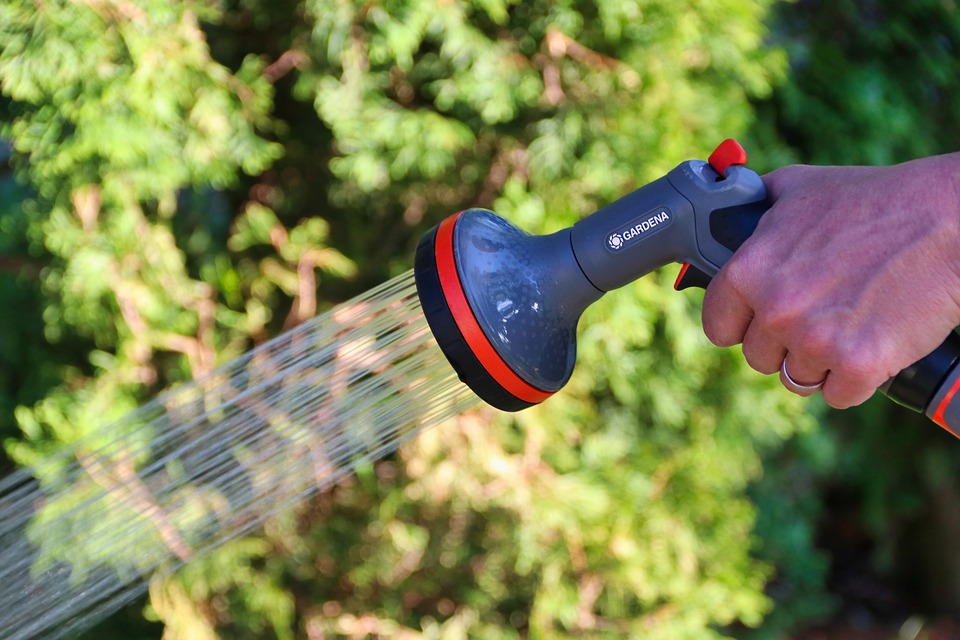
Moisture is an essential component of successful composting. Compost piles will breakdown quickly when it is kept moist at all times. This is especially true if you live in extremely hot and arid regions. Invest in a good-quality hose at the outset to avoid problems like cracking and kinking.
05. Compost Thermometers:
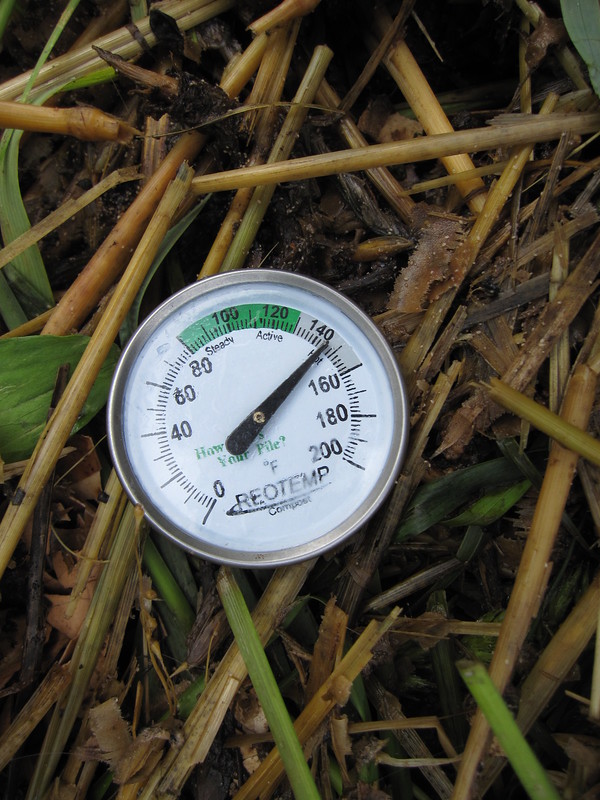
Temperature plays an instrumental part in a successful compost pile. How cold or how hot our pile is can determine the speed of the entire process. A compost thermometer can help assess how steady, active or hot your compost pile is. This will also help to determine if the pile has sufficient moisture or if you need to add more water. Knowing the temperature will also let you have a better understanding of when you can turn the pile. The temperature has to peak before you can turn it. The ideal temperature is between 135 and 160 degrees F.(57O C to 71OC)
The temperature of the pile will drop when it doesn’t have enough oxygen. That is the perfect time to turn it.
How to Compost?
Composting isn’t as difficult as it seems and once you have the right kind of tools and get the ratio right, it’s actually pretty straightforward. For composting, the ideal ratio is:
- One part greens – This includes things like flowers, grass clippings, vegetable and fruit scraps and coffee grounds. All these items add nitrogen to your compost.
- One part browns – Cardboard, sawdust, twigs and dead leaves are the browns. All of these items provide carbon to the compost.
Water should be added as and when needed. In order to form good compost, it needs moisture which can be provided by spraying the pile with some water depending on the local climate. The pile needs to be as damp as a wrung-out sponge. People living in rainy areas need not worry about watering as much.

You may need to adjust the ratio a few times in the beginning till you get it right. But once you do, composting is really low-maintenance and will provide your plants with the right amount of nutrition. By maintaining the correct amount of oxygen, water, green-brown ratio and temperature, your compost will be ready in a few months.
Microbes that Facilitate the Process
There are two classes of microbes that facilitate the process of composting:
- The aerobes that work in the presence of oxygen
- The anaerobes that work in the absence of oxygen
The kind of microbes that will aid the composting process depends on the type of composting you choose – aerobic and ventilated composting in tumbles, piles or heaps or anaerobic sealed-container composting.
Let’s have a better look at both these classes of microbes in detail:
01. Aerobes:

Just thinking about composting brings to mind bins, heaps or ventilated barrels which are all types of aerobic composting. Aerobic microbes are naturally occurring organisms that need air and oxygen to survive. These microorganisms eat the organic matter of the pile and change its composition chemically, molecule by molecule. As they consume the organic matter, they give off water, energy and carbon dioxide in return in the process.
But, where do these microorganisms come from? Well, composting microbes are already present everywhere in the soil which eliminates the need to add them separately to the pile. Given appropriate conditions of proper moisture, temperature and oxygen level, you can expect good compost as the end result.
02. Anaerobes:
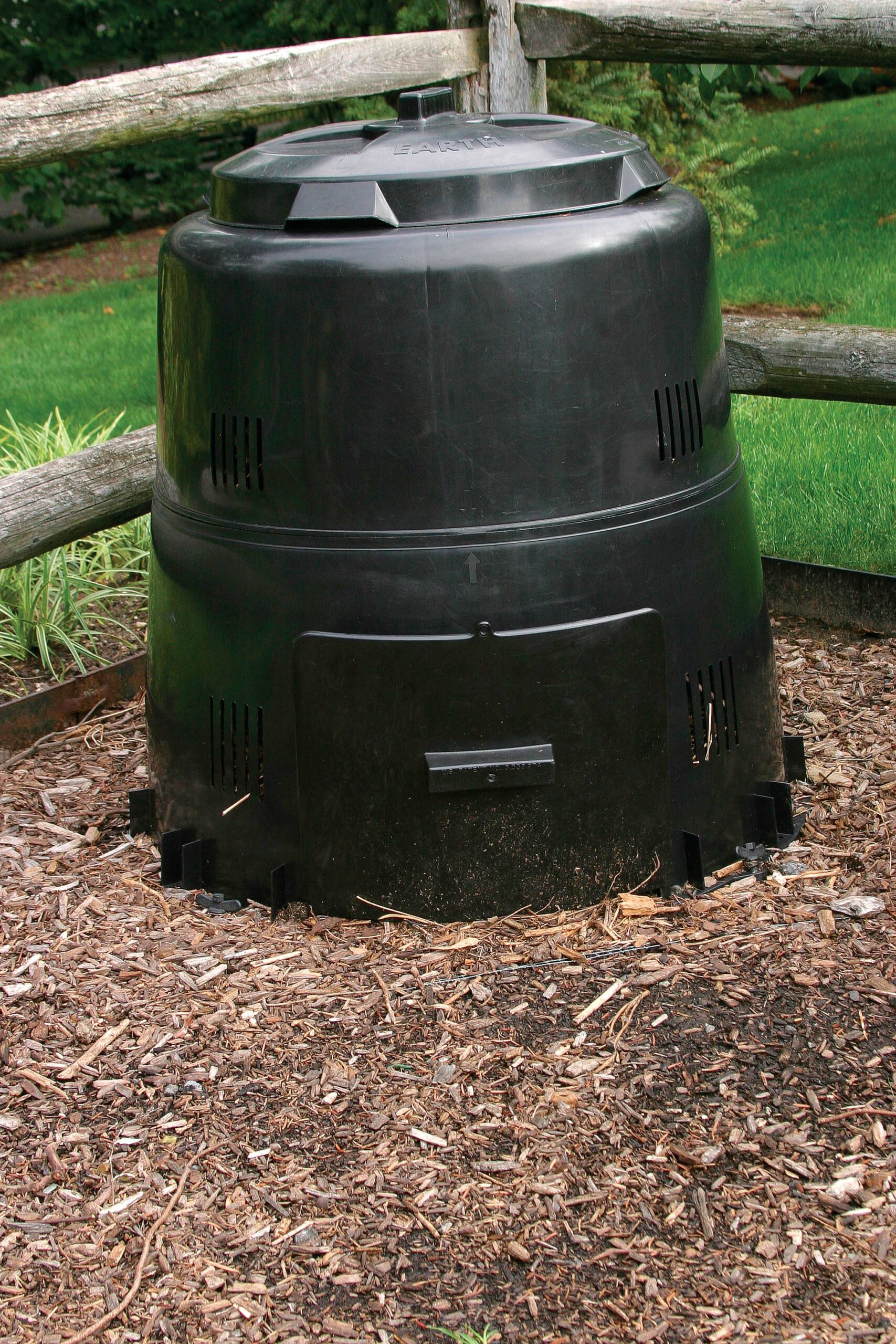
Anaerobic micro-organisms assist the process of a sealed composting system. It is as simple as filling up a plastic bag with yard waste or table scraps and setting in the sun. The anaerobic microorganisms will break down the materials and turn it into a foul-smelling, soupy mess, higher in acid content as compared to solid compost. However, it can also be used as a soil amendment.
For anaerobes to work, they need organic material and water and in turn, give off methane, carbon dioxide, energy and hydrogen sulphide. Hydrogen sulphide can leave the compost smelling like rotten eggs while methane is a powerful greenhouse gas.
However, the anaerobic process of composting is slower than aerobic and you will have to deal with a smelly pile for a long time.
Requirements for the Microorganisms to Survive (Moisture, Temperature, Aeration, Location)
Microbes work really hard to make compost for you and ask for very little in return. Water, food, oxygen, location and warmth are all key elements in ensuring excellent end results.
01. Moisture:
Water is needed by the microorganisms for their survival. But, how will you know when and how much water to add to the pile? Overwatering can make the pile all slimy and smelly while less water can kill the microbes which mean you won’t get your compost.
Therefore, it’s crucial to maintain a perfect balance. You will need to add in water less frequently if you add more green material including weeds, cut grass and leaves. If you want to add dry materials to the pile like hay or straw, it would be a good idea to soak it in water first so it doesn’t excessively dry out the compost.
If you live in a high-rain receiving area, it would be ideal for constructing a roof that could be as simple as a tarp over the compost pile. Sheltering the pile is essential as you don’t want the nutrients to wash away with the rainwater.
02. Temperature:

The microbes working on making that compost can emit a lot of heat which can raise the temperature of the compost bin or pile and in turn speed up the entire process.
The Washing State University explains the temperature of a well regulated compost pile could be anywhere between 135-160˚F (57OC to 71OC). At such high temperatures, nearly all kinds of plant diseases and weed seeds are killed. A compost thermometer can be beneficial in measuring the exact temperature of the pile. By having a better understanding of the temperature, you will know:
- When to add more materials
- When to turn it
- When to spray it with water
- When it’s done
03. Aeration:
For aerobic microorganisms to work on composting efficiently, they need oxygen. With adequate ventilation, your pile will decompose nicely. To improve oxygen flow, you can turn the pile often with a spade, a pitchfork or an aerator. A compost tumbler makes the task of turning the compost unbelievably easy. All you need to do is turn the lever.
By turning the content of the pile, the decaying material will be rearranged. If you don’t turn your pile ever, your materials will break down rather slowly, resulting in a smelly and slimy pile.
04. Location:
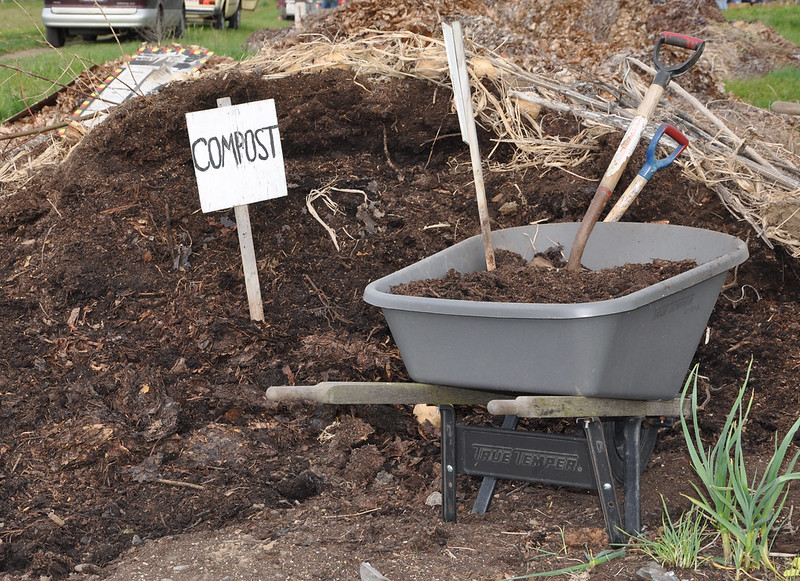
The location you choose for composting should be dependent on aesthetics and function. Composting when done in standing frames or in a pit should be tucked away in the yard. Compost bins or tumblers can be placed near the kitchen for convenience.
Pros and Cons of Composting
Advantages of Composting:
- Keep landfill free of organic waste
- Helps retain soil moisture
- Lessens the need for garden fertilizer
- Balances soil pH and nutrients
- Encourages the production of good bacteria that can effectively breakdown organic matter
- It has a positive impact on air quality
- It is cost-effective
Disadvantages of Composting:
- It can stink up the yard if not turned enough
- Requires maintenance
What Not to Compost?
While the list of what not to compost is short, it’s extremely crucial. All these items must be avoided to ensure a healthy compost pile.
- Animal products including meat, dairy, eggs, bones or fish
- Fat, oil, lard or grease
- Yard waste containing chemical pesticides
- Pet waste especially cat litter
- Black walnut tree trimmings
- Pest-infested plants
What Can the Compost be Used for?
Gardeners love compost for its versatile nature. It can easily be used all over the garden and yard for more green and lush space. When your compost starts looking like dirt and smells as if you have been hiking through a rain forest, it’s ready to be used.
You could consider mixing compost with the garden soil. It does take up a lot of time but is worth the time and effort. During spring, spread an inch or two of compost over your bare garden. Work this slowly into the top five inches of existing garden soil. This will enrich the soil and enrich it with all the nutrients.

Compost can also be used for mulching and is super easy and effective. Start by spreading half-inch layer of compost at the base of your plants. Over time, it will gradually seep through the soil and into the roots. This layer can also be beneficial in preventing the growth of weeds in your garden. Consider adding a handful of compost to the hole before planting any plant. It will help prevent transplant shock and assist in feeding the roots.
Compost can also be added to potted plants. Simply mix your potting soil with homemade compost to help the new plants thrive. The soil of old potted plants can also be refreshed this way.
FAQ’s
Q1. How much space do I need to compost?
The minimum size of a workable compost pile is about three by three feet. However, it may not be large enough to hold all the organic waste of a house. You may require multiple composting bins if you are hoping to compost more than just your yard waste.
Q2. My compost pile stinks. Now what?
The compost pile can start smelling like rotten eggs in case it goes anaerobic. A perfect balance has to be maintained to keep the pile smelling fresh. Aeration can be improved by adding in straw, woodchips and other dry materials. Turning it often will also help prevent unpleasant odour.
Q3. I don’t have a garden. What will I do with the compost?
Compost can be spread around shrubs, trees as well as other landscaping plants around your property. You could even add it to your potted plants to enrich them.
Q4. How to prevent my compost pile from attracting pests?
If you have been composting the right way and adding only organic substances to it, pests shouldn’t be an issue. However, it’s important to cover the pile entirely when you add food scraps to it. Make sure to bury it several inches deep in the pile to discourage rodents or other pests from getting into it and making a mess.
Q5. Is winter composting possible?
Yes, you can compost even during winters. Depending on the area where you live, there might be a few additional considerations. In areas with arid winter conditions, you might have to water the pile more frequently to maintain moisture. In areas with heavy precipitation, either add more dry materials to the pile or shelter it.
Conclusion
The advantages of compost easily outweigh its cons which is perhaps why it has become so popular in recent times. While it may seem hectic at first, once you get the hang of it and figure out the basics, it is unbelievably easy and extremely beneficial.
I hope this composting guide might be helpful for beginners and encouraged you to compost.
So, what you are waiting for? Let’s get composting!
And before you go, must read below mentioned articles, too:
6 Steps to Make Compost From Your Kitchen Waste!
The Perfect Guide to Fertilizing Your Lawn!
Image Courtesy: Image 2(a), Image 2(b), Image 2(c), Image 2(d), Image 2(e), Image 2(f), Image 2(g), Image 3, Image 5, Image 8, Image 9, Image 10, Image 11, Image 12, Image 13, Image 14
Author Bio
Rashmi Shaw – Rashmi Shaw has been writing content since she was in her first year of college in 2014 and since then, there has been no looking back. Recently, she completed her Master’s in English Literature. She has an earnest passion for writing and has written numerous articles, blogs and PR’s for diverse niches. She attempted working as a full-time writer for a year and a half but is back to freelancing as it gives her the creative liberty that she desires. She loves gardening, reading books and travelling.
























